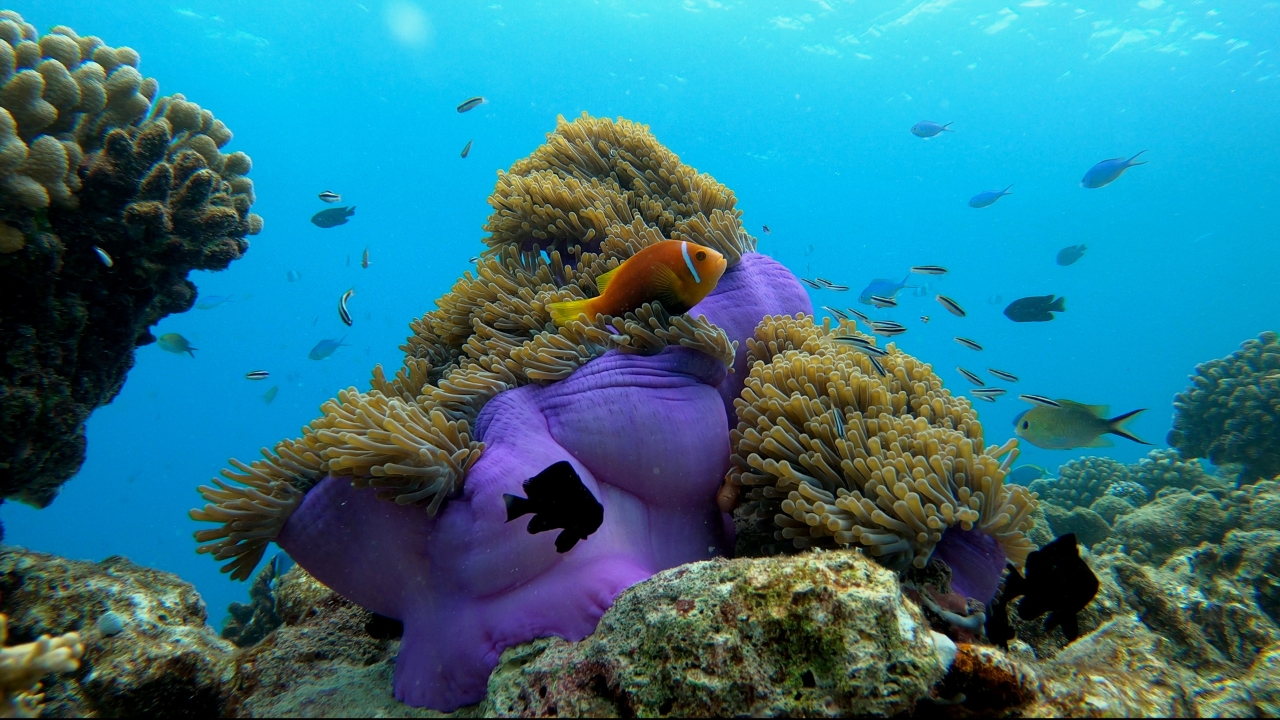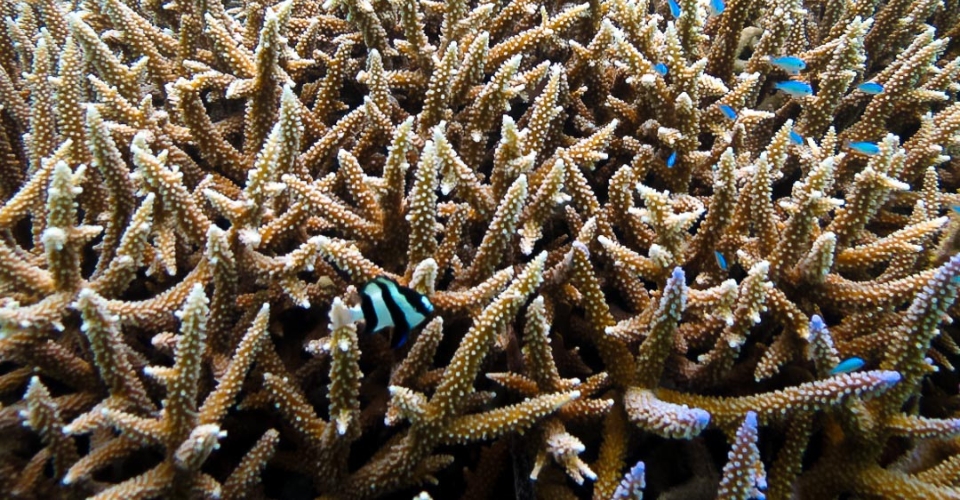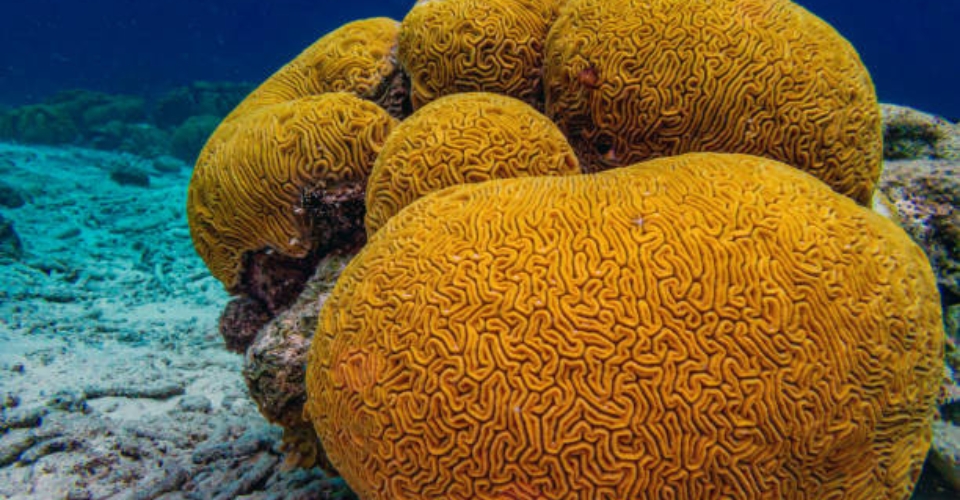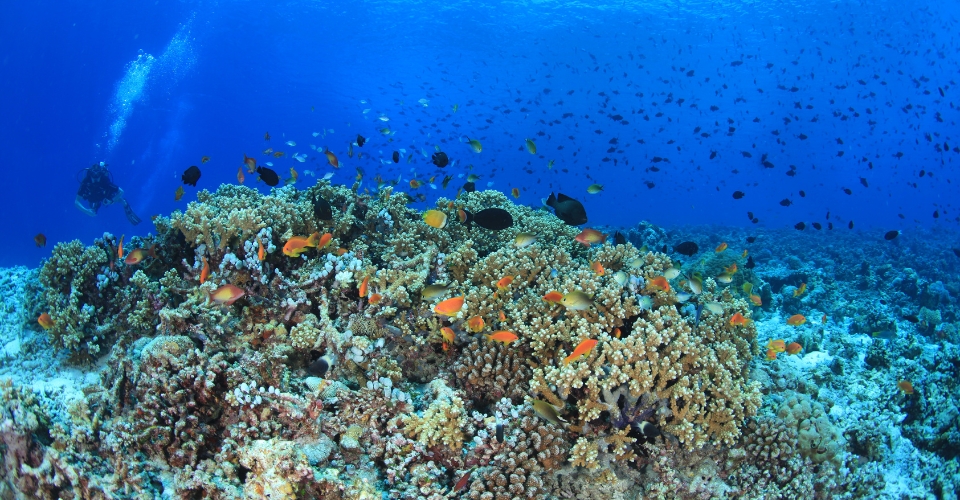
Exploring the Vibrant Coral Reefs of Veligandu
By Sarah – Resident Marine Biologist
Veligandu is a breathtaking island where visitors can explore an incredible coral reef ecosystem teeming with diverse marine life. The island is home to a stunning variety of coral species, from the essential and common Acropora, which play a crucial role in reef-building, to the intricate and mesmerizing Fungiidae, also known as mushroom corals. Among these coral formations, you’ll also find beautiful anemones, the beloved homes of the iconic clownfish.
Snorkeling & Diving in Veligandu
The island features two spectacular snorkeling and diving sites located on the west and east sides, offering opportunities for exploration whether alone, with friends, or under the guidance of our expert team.
West Side – A Reef for All Skill Levels
The first reef is conveniently located in front of the diving center, inside the atoll. It features an easy entrance from the beach with a gentle depth increase, making it ideal for beginners. Here, snorkelers can observe a variety of colorful reef fish, flourishing coral formations, and even juvenile blacktip reef sharks patrolling the waters.
South-East Side – A Haven for Marine Life
The second house reef is located on the south-east side of Veligandu Island, facing the outer edge of the atoll. This spot is particularly famous for encounters with turtles, eagle rays, and, with some luck, traveling manta rays. While all the fish and coral species found on the west side can be seen here as well, the current can be stronger due to the reef’s location. For scuba divers, access to this area is only available by boat, but snorkelers can reach it with just a 5-10 minute swim from the beach.
A Guide to the Coral Species of the Maldives
The Maldives boasts a diverse array of coral species, each playing a vital role in the underwater ecosystem. Below is a simplified guide to some of the main types:
1. Stony Corals (Hard Corals)
These are the primary reef-building corals, secreting calcium carbonate to form a hard skeleton that provides shelter for marine life.
Examples: Brain corals, Elkhorn corals, and Staghorn corals.
2. Soft Corals
Unlike stony corals, these do not have hard skeletons. Instead, they are flexible and sway with ocean currents, often displaying vibrant colors.
Examples: Sea fans, leather corals and Gorgonians.

3. Fire Corals
Though not true corals, fire corals are common in the Maldives and should be avoided due to their stinging capabilities. They appear in bright yellow or orange hues.
Examples: Millepora species.
4. Brain Corals
These corals resemble the ridges and grooves of a human brain and can grow into massive formations.
Examples: Diploria species.
5. Table Corals
Recognized for their wide, flat, horizontal structures resembling tables, these corals thrive in deeper waters and create stunning formations. Examples: Acropora species.6. Mushroom Corals
These unique corals have a rounded, mushroom-like appearance and are typically found in sandy or lagoon areas. Examples: Fungia species (also called “disc corals”)All these coral species are essential to the health of the Maldivian reefs. They provide food, shelter, and breeding grounds for countless marine creatures, including fish, shrimp, and sea turtles. Protecting these delicate ecosystems ensures that future generations can continue to marvel at their beauty and biodiversity.
Exploring the reefs of Veligandu is an unforgettable experience, offering a glimpse into the vibrant and intricate world beneath the waves. Whether you’re snorkeling or diving, every visit to these reefs promises a new adventure filled with mesmerizing marine life.

Every Monday Evening
Join us for the presentation night at the Thundi Bar – Secrets beneath the Waves »
Learn about marine discoveries and the thrill of responsible ocean exploration directly from our knowledgeable Dive and Watersports Instructors and Marine Biologist.
Planning your stay at Veligandu? Browse through our special offers
